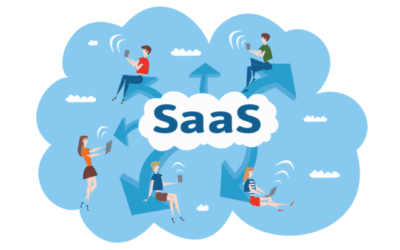According to the CB Insights survey, in more than 40% of cases, the reason for startup failures is low consumer demand, which makes it impossible to launch large-scale sales. IT companies often spend years researching and creating software. As a result, their product falls short of expectations and does not pay off even 50%. The main reason for this is the neglect of checking the idea for relevance. Many of the problems related to launching a startup may be avoided with MVP development.
The essence of the testing concept and the main types of MVP
MVP, in fact, is a trial version of a program (app, service, or platform), which has a basic set of functions that customers can use and express their opinion about the quality and convenience. MVP is aimed at finding out the reaction of the end consumer to an innovative product that hasn’t entered the market yet. Testing by MVP software development helps the IT specialists to realistically assess their chances of success, form the direction to follow, make timely changes to the promotion strategy and sales characteristics, and even completely abandon the project in some cases.
The MVP concept was proposed in the early 2000s by Frank Robinson, co-founder and CEO of SyncDev. According to him, MVP is not just endowing a product with the minimum possible functionality but a way of thinking for teams that run a new project. Startup consultants Eric Ries and Steve Blank played a significant role in popularizing the theory.
Hardly any company would refuse to know if its idea has prospects. The MVP provides feedback from targeted users, making it clear if the team is moving in the right direction. So, the main task of minimum viable product development can be considered as minimizing the efforts and funds of the enterprise until it is clear whether the project will “strike”. You can check it in different ways.

Popular MVPs with examples of brands
- Flintstoning, or Wizard Of Oz. The consumer is offered a product that... does not exist. Actually, this is just an "image" imitating a program that has not yet been developed. The method is useful for testing complex automated processes. It avoids the huge expense of implementing a vague idea that may not be accepted by the audience.
Example: Zappos (online store of shoes and clothes). Before starting the store, Nick Swinmurn tested the business idea in an interesting way: he took photographs of shoes at a local mall and posted them on eBay. When the customer was ready to order the product, he went back to the store, bought the shoes, and sent them to the customer. For the client, this process looked automated.
- Concierge. In terms of simulating the process, the method is similar to the previous one, but the testing is done entirely manually. Such MVP development is beneficial for a company whose clients are poorly tech-savvy and prefer to work offline. Manual work can be presented as personalized service to chosen clients.
Example: Rent the Runway (a platform that offers designer clothes for rent). The company proposed the students try on dresses for rent. After making sure of the high demand and receiving high-quality feedback, it launched its own service.
- Single Featured. A product equipped with one function, priority one, is tested. It helps avoid a common mistake, functionality oversaturation. In the case of a multifunctional set, it is unclear what exactly the customers liked about it.
Example: WhatsApp (instant messaging service). Initially, it had one single function, the ability to set the current status so that friends from the contact list could see it. This MVP was helpful in app development. When people started to use status for messaging, it was decided to refine the application.
- Piecemeal. It’s the middle between Flintstoning and Concierge. The test version is assembled in parts from services and tools that are already successfully operating on the market. Thus, the company saves on developing its own infrastructure from scratch. The main thing is to combine functions correctly.
Example: Groupon (collective discount service). Early on, the service was a combination of WordPress, AppleScript, and Apple Mail. When orders came from the website, the coupon PDFs were manually generated. People liked the idea, and the business was scaled up.
MVP: Why is it beneficial?
Sometimes startups confuse MVP with Proof of Concept (PoC), giving it a completely different meaning. These terms are related but not equivalent. PoC is research that helps understand the viability of a hypothesis or concept. It is based on a practical assessment of the feasibility of an idea. In this case, the focus is made on the technical side, without testing the entire set of functions. Research is carried out within the company to determine the feasibility of implementing the idea. It is logical to start with the PoC, continue the development of a visual prototype, and then move on to testing. In the last step, you can modify the software until it is perfect for the user.
4 strong advantages of MVP:
- Minimizing Costs and Reducing Risks. Testing avoids the investment of unnecessary or redundant functionality. In addition, it’s a chance to choose the best direction and refuse to participate in deliberately failed projects.
- Search for early adopters. Demonstration of the main functions of the program to first users may interest solvent consumers who can purchase software in the future.
- Attracting investors. Positive reviews are proof of the demand for the product. For investors, it is the best indicator of the competitiveness of the project.
- Study of the audience. The data on the users’ needs and wishes obtained during the testing simplify creating a demanded product with personalized functionality and design.
MVP is the easiest way to figure out whether to continue software development and, if yes, then what features should be introduced to attract customers. If the idea hasn't passed the test of strength, then it's time to change course and choose a more promising direction.






